A shorter version appeared in the Redlands Community News.
For Scott Eliason, a Regional Botanist with the U.S. Forest Service, the recent agreement protecting four endangered plants from mining goes far, far back. Over 25 years…..
When Eliason began working on the San Bernardino National Forest as a botanist in 1999, five plants had been listed as federally endangered, subject to extinction. All of them grew in calcium carbonate rock on the Forest. Four of the five were in direct conflict with the mining interest in the high quality of calcium carbonate, which is used in cement but also toothpaste and medicine.
As Aaron Sims, Rare Plant Program Director at the California Native Plant Society (CNPS) said in a statement, “High-grade calcium carbonate can be found in many other places, but the only place on the planet where these special plants live is confined to a small area in Southern California, primarily on the northern slopes of the San Bernardino Mountains.”
Eliason said the Forest and the mining companies did not want to let those interests collide, and he immediately started working on what would become the Carbonate Habitat Management Strategy.
“It was very collaborative, the Forest Service took the lead with the California Native Plant Society (CNPS), BLM, San Bernardino County and several mining companies very involved. We really all worked together to come up with a strategy that allowed mining but would provide for the conservation for those endemic species,” said Eliason.
The Four Subject to Extinction
The threatened and endangered species include Cushenbury buckwheat (Eriogonum ovalifolium var. vineum), Cushenbury milk-vetch (Astragalus albens), Cushenbury oxytheca (Acanthoscyphus parishii var. goodmaniana) and Parish’s daisy (Erigeron parishii). Three were limited to a small area and especially subject to extinction.
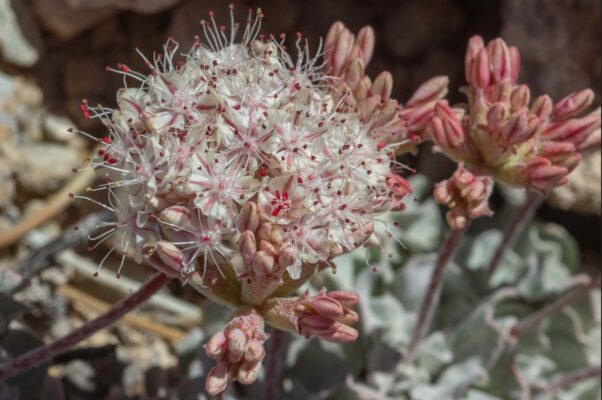
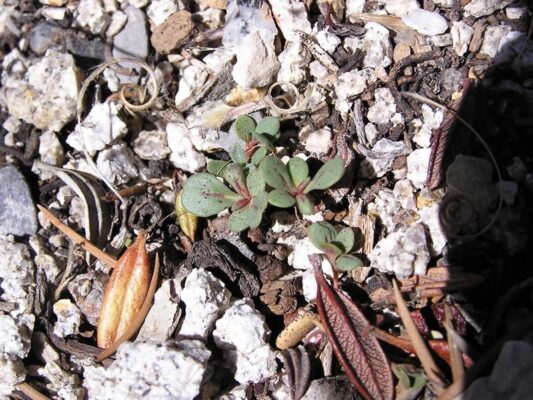
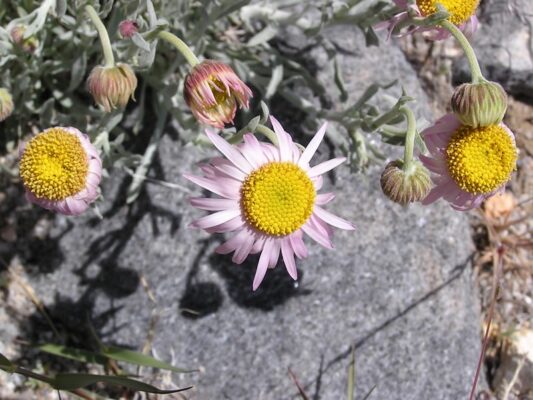
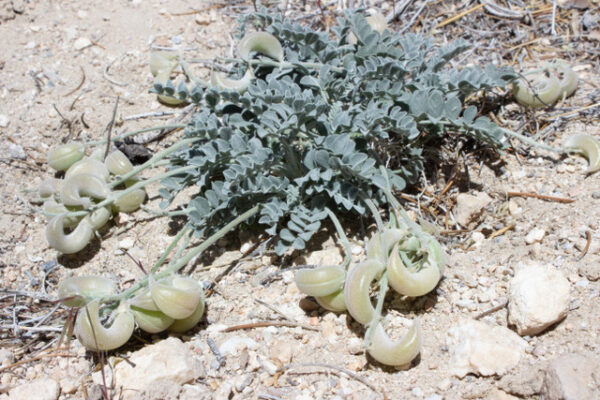
All buckwheats are considered a keystone plant, with the Cushenbury buckwheat a likely host to 27 butterflies and moth species, according to CNPS’ Calscape, a directory of California’s native plants.
After being incorporated into the forest plan in 2005, the BLM recently issued a withdrawal which prohibits limestone mining on 2,841 acres in the national forest for 50 years, which can be extended. One reason it took so long is location’s calcium carbonate was pharmaceutical grade, so a highly sought commodity.
Discovering ‘Mother’
CNPS volunteer and California naturalist and photographer Wendy Walker went looking for the plants with botanist and fellow photographer Tom Egan. This was in April, 2017, a wet year similar to our recent one. Near the Mitsubishi Cement Plant, they drove for a short distance on a rocky road before walking around. “After a while, once we found one Cushenbury buckwheat, we started seeing more. I was ecstatic,” she said, calling it a plant only inches tall but with a mighty floral display, with flowers tinged with shades of pink and succulent-like gray leaves.
“Then we saw an especially large one on top of a steep hill, and started laughing because it was so big. We imagined it must have been the great mother of them all!”

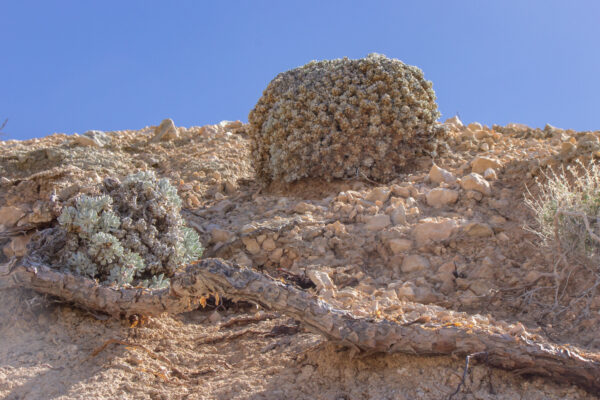
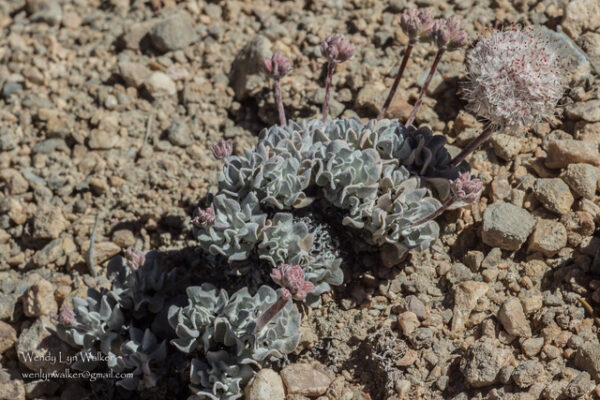
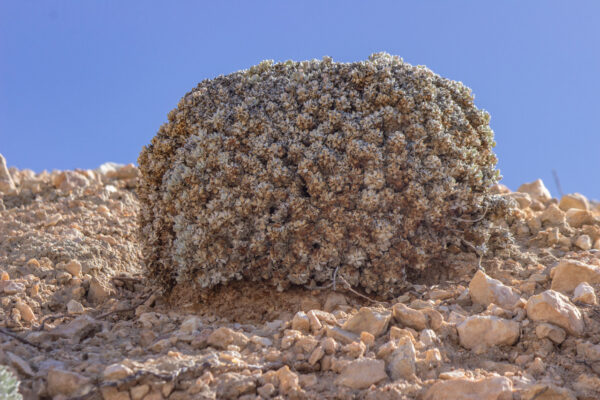
Eliason called it a remarkable specimen when shown the photo. Almost 25 years later, Eliason said, “It’s been a long-time challenge and interest of mine — and very satisfying to see it come to fruition.”
In case you want more info….
Why do these grow only here?
Eliason explained these plants tolerate really poor soil like the carbonate heavy soil, which forms from ancient seafloor deposits, but in better conditions they are poor competitors so are crowded out by more common species.
What mining is continuing?
Eliason said the three mining companies continue to mine on the north slope, but not right adjacent to the protected areas. “The Carbonate Habitat Management Strategy included the principles of reserve design to emphasize protection of contiguous blocks of the best habitat – as opposed to many smaller areas scattered across the landscape which are more difficult to manage and protect,” he said. “Mining continues in areas of valuable mineral resources outside of the identified priority conservation lands.”
Who was Cushenbury who has 3 of the plants with his name on them?
John Cushenbury was an early miner and rancher who discovered silver in limestone deposits in the area now called Cushenbury Springs and Cushenbury Canyon. This is where the Mistubishi Cement Plant (six miles so of Lucerne Valley) is now located. The three plants are named after the geography where they were found.
More info on the four plants (from Calscape and Calflora):
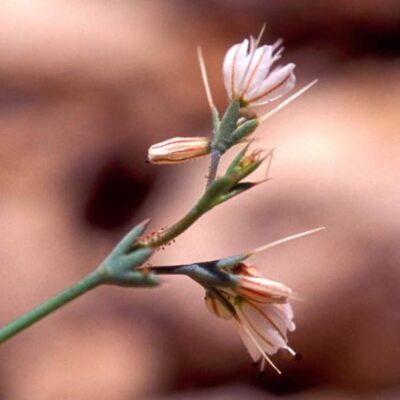
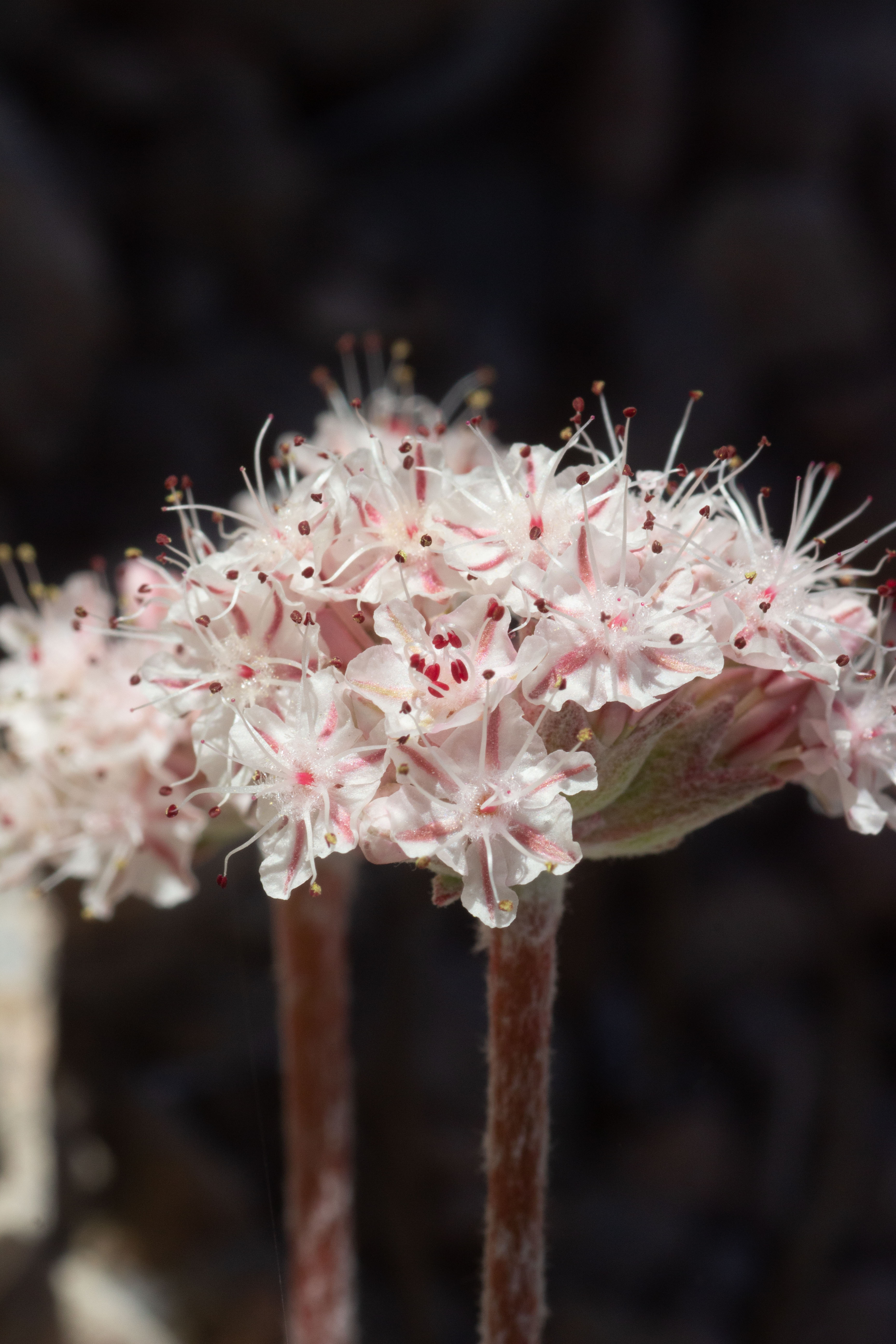


Cushenbury buckwheat is a low, densely-matted perennial herb that reaches 10-20 inches in diameter. It has silvery white leaves and dense inflorescences of creamy-white flowers that turn red as they age, blooms May through August. (info from the Center for Plant Conservation)
Cushenbury milk-vetch is an annual or perennial herb producing a prostrate mat of delicate stems coated densely in silvery hairs. The pea-like flowers are a deep purple with a spot of white or light pink. The fruit are noteworthy legume pods less than an inch long.
Parish’s daisy is a small perennial herb that can reach 12 inch. tho its taproot can penetrate 20 inches. Its flowers feature a yellow disc with lavender, pink, or white florets.
Cushenbury oxytheca is the most restricted of the carbonate endemic species of the San Bernardino Mountains. It’s a small wiry annual of the buckwheat family ranging from 2-12 in tall, with a basal rosette of leaves and small flower clusters that are white to rose or greenish-yellow.
(thanks to Calscape and Calflora and the USFS for much of the plant info above.)
Leave a Reply